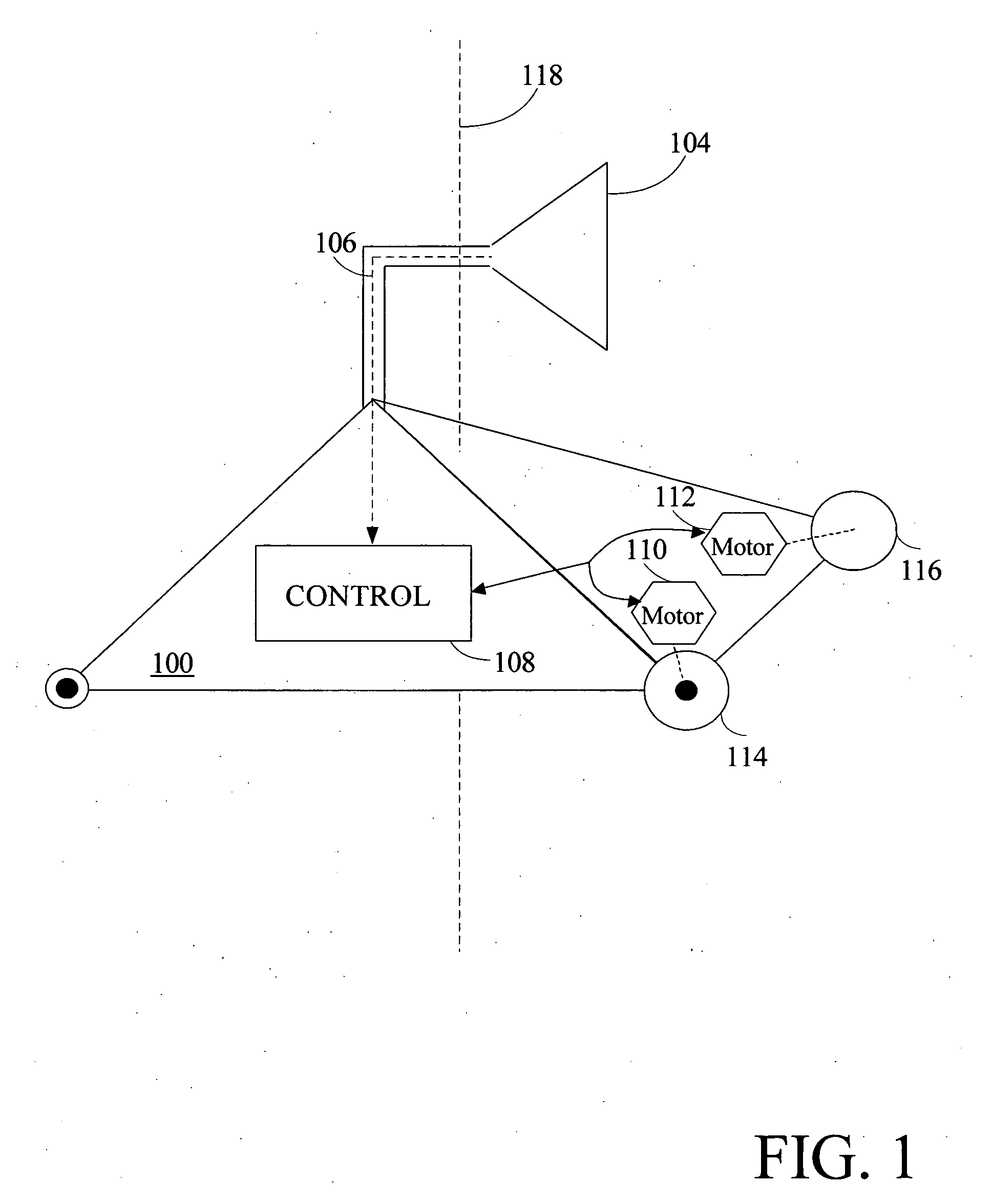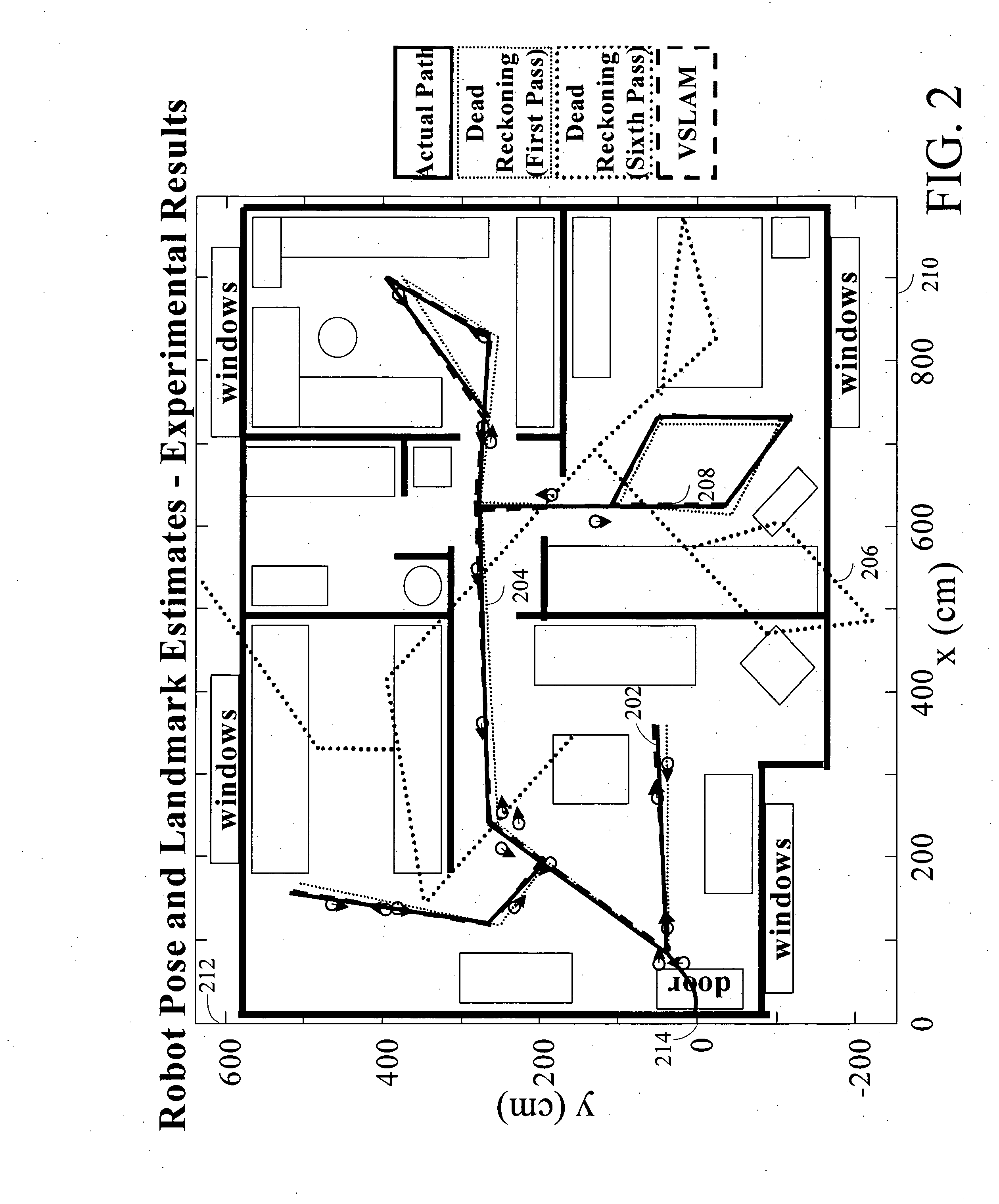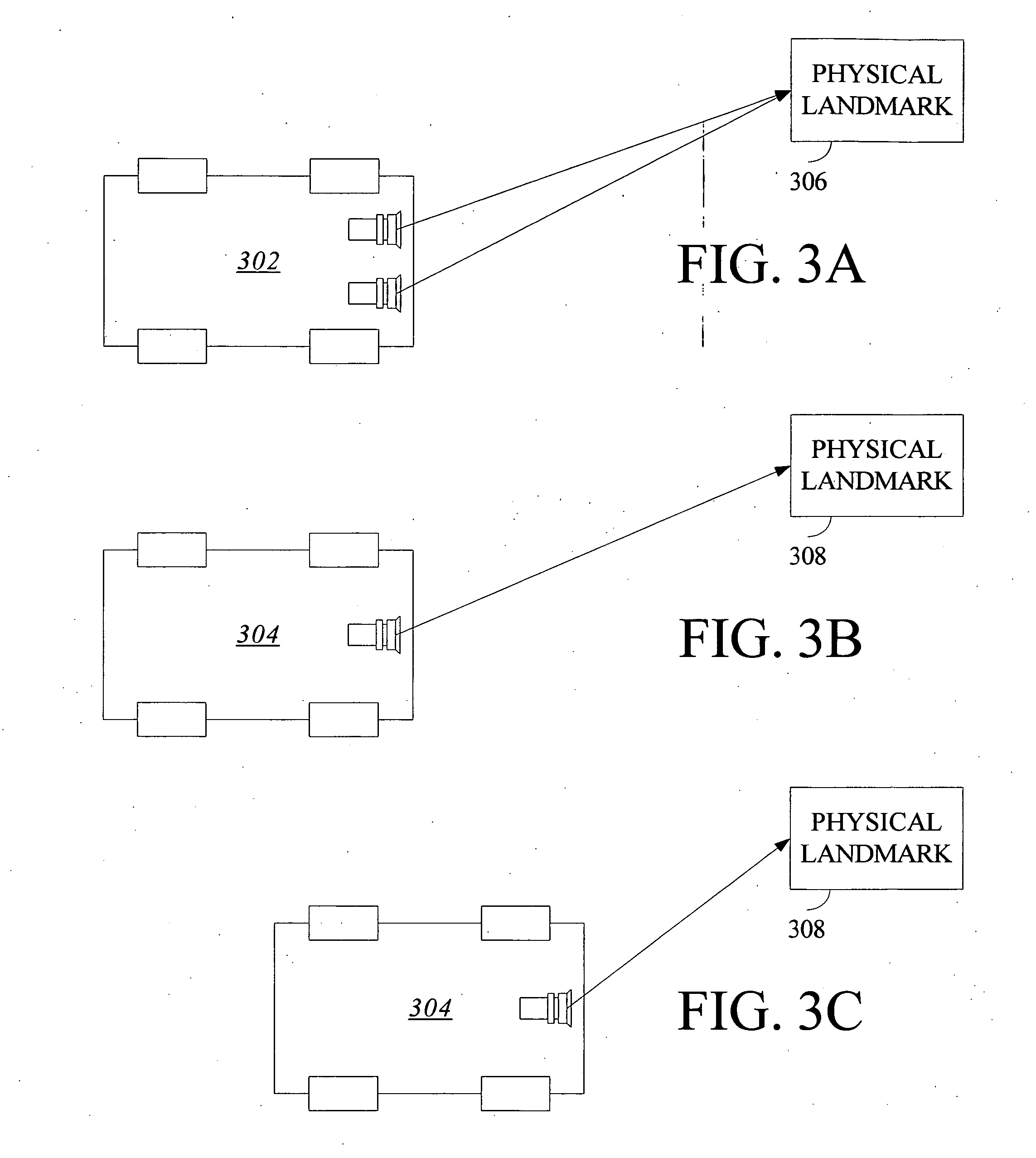Sequential selective integration of sensor data
a sensor data and selective integration technology, applied in the field of combining or fusing data from sensors, can solve the problems of not updating the estimate of characteristic correctly, not convergently, and common estimation of characteristic that cannot be known with certainty,
- Summary
- Abstract
- Description
- Claims
- Application Information
AI Technical Summary
Benefits of technology
Problems solved by technology
Method used
Image
Examples
Embodiment Construction
[0056] Although particular embodiments are described herein, other embodiments, including embodiments that do not provide all of the benefits and features set forth herein, will also be apparent to those of ordinary skill in the art.
[0057] An example of an embodiment of the method advantageously uses one or more visual sensors and one or more dead reckoning sensors to process Simultaneous Localization and Mapping (SLAM). The combination of SLAM with visual sensors will hereafter be referred to as VSLAM. Advantageously, such visual techniques can be used by a vehicle, such as a mobile robot, to autonomously generate and update a map. In one embodiment, VSLAM is advantageously used by a portion of a vehicle, such as by an arm, leg, hand, or other appendage of a vehicle. In contrast to localization and mapping techniques that use laser rangefinders or other range-based devices or sensors, the visual techniques are economically practical in a wide range of applications and can be used ...
PUM
 Login to View More
Login to View More Abstract
Description
Claims
Application Information
 Login to View More
Login to View More - R&D
- Intellectual Property
- Life Sciences
- Materials
- Tech Scout
- Unparalleled Data Quality
- Higher Quality Content
- 60% Fewer Hallucinations
Browse by: Latest US Patents, China's latest patents, Technical Efficacy Thesaurus, Application Domain, Technology Topic, Popular Technical Reports.
© 2025 PatSnap. All rights reserved.Legal|Privacy policy|Modern Slavery Act Transparency Statement|Sitemap|About US| Contact US: help@patsnap.com



